The other day I had a comment on a article in which I was told, quite rightly, that not all chipboard furniture gives off a strong pungent odor, the emission of formaldehyde being different depending on the quality of the chipboard. The follow-up to the comment is this article.
Particleboard, short for woodchipboard (or chipboard), is a composite material made by hot-pressing wood chips, sawdust, wood dust and resins, which are the binder, the adhesive.

It emerged as an industrial product in Germany during the Second World War. In the 1950s it began to be used in furniture making, and was initially even more expensive than solid wood. As the technology developed, it became a cheap product and was widely used by companies such as IKEA, which promoted the idea of furniture, interior decoration and beautifully designed homes at minimal cost.
The adhesives used in the manufacture of chipboard are different depending on the qualities the resulting board is to have. For example, ureoformaldehyde resins are used for low cost and ease of use, ureaamine resins for increased water resistance, and phenolformaldehyde resins for outdoor use.
The main problem with most resins used is the emission of formaldehyde. Formaldehyde is a colorless, flammable gas with a strong pungent odor. Since 2008, the World Health Organization has placed formaldehyde in Category 1 of the list of potentially carcinogenic substances. It is considered toxic, irritating to the skin and mucous membranes. It is the basic raw material for the manufacture of adhesives used in wood-based panels (chipboard, PFL, MDF, plywood).
Formaldehyde emission is the main quality indicator for wood-based boards and represents the amount of a board released through its faces and edges into the ambient air under normal or accelerated conditions. Formaldehyde emission is influenced by several factors, including the type of board, its characteristics, the type of adhesive used, the manufacturing technology (adhesive consumption, temperature and pressing time), environmental conditions (air humidity, temperature).
European standards, to which our country is aligned, include requirements for the levels of formaldehyde emitted. Standard EN 13986/2004 classifies products according to their formaldehyde content/emission into emission classes E1 and E2.
Due to the increasing requirement for boards to fall into the E1 class of formaldehyde emission, adhesive manufacturers have developed products with the lowest possible emission or products that react with formaldehyde, thus preventing its emission. These products are called scavengers. At the moment, low-emission or even formaldehyde-free adhesives are more expensive, which is why tiles that fall into the E1 emission class are more expensive. Now I think you can explain much more easily why, even though we are still talking about chipboard furniture, some pieces give off the pungent smell for a long time and others hardly smell at all.
There's still a lot to say about wood-based boards, formaldehyde, adhesives, but I don't want to make this article a chemistry paper. If you want more details, please write to me and I will be happy to reply.





















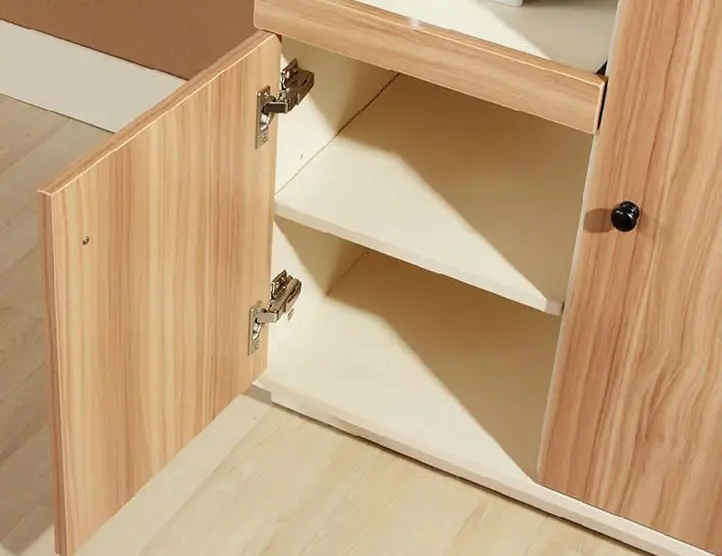
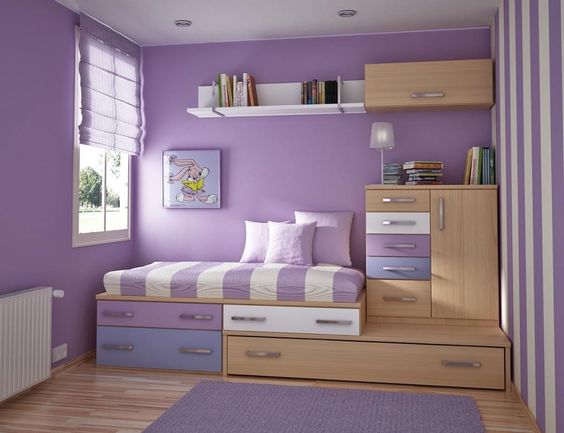




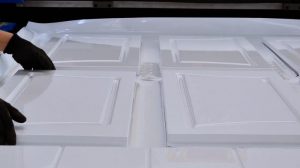


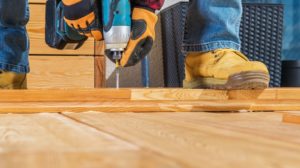
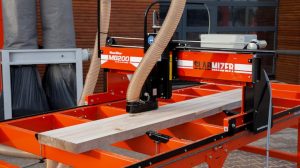



Can this strong, pungent smell be stopped? I have just purchased a set of straw furniture for my bedroom and the chemical smell is terrible. I air the room daily but...no result. Thank you!
Unfortunately now, when it is already in your house, there is nothing you can do. You can only leave all furniture doors open and air out as much as possible. It will take some time before the smell goes away. The furniture has been made with low quality chipboard, formaldehyde-containing glue and no formaldehyde-blocking substances have been added. In the future, if you buy furniture made of chipboard, make it odour-free from the start and accept the price difference for this. It is really worth it. I wish you to get rid of the smell as soon as possible. All the best!
Thank you for your answer. If in a few months the smell doesn't go away I think I will have to change it, from what I understand the formaldehyde fumes last for years. I hope the harmful effect will not affect us in a few months time.
I give you a solution tested by me: plants that absorb formaldehyde!Ficus and aloe vera.In 48 hours after introducing the ficus, the smell disappears.The bad part is that in 24 hours after removing the plant reappears!
And the lady's opinion that the emission is due to the type of pale I think it falls down.I have furniture with Egger pale and it still smells after almost a year!
Hello. I beg to differ. I have seen children's furniture made of chipboard that smelled absolutely nothing of formaldehyde. And I'm not talking about a single piece but entire sets. There is chipboard that has zero formaldehyde emissions. Unfortunately we are not the beneficiaries of it. 🙂
All the best!
It's not opinion, it's real. That's why there are standardised emission classes at European level, because emissions are real.
The manufacturer of the material has nothing to do with emissions. He produces material with different emission classes. It is up to the furniture manufacturer whether he buys low-emission chipboard for furniture, or saves on the health of his customers, and makes furniture, which will be used indoors, from cheaper chipboard that does not meet the E1 emission class.
I bought osb tiles to put under the floor, they have a strong smell ...they have not been installed yet and I would like to know how harmful it is
Hello.
OSB is used more outdoors, so the smell is less annoying. The tiles will continue to emit odour for a long time and it will be quite annoying. How dangerous it is I can't tell you exactly, because I don't have an analysis of the tiles to see what class they fall into. But it is free formaldehyde emission which has been declared a hazardous product and attempts have been made for many years to reduce these emissions. Formaldehyde is not only in wood products. It is found in many products (such as air fresheners). The problem is that it accumulates.
All the best.
Hello, an opinion please. If I wax/paint furniture with wax or water-based varnish/paint, can it help block formaldehyde emission?
Hello. Unfortunately, lacquering or waxing doesn't really help. Formaldehyde will continue to be removed through the joint areas where the board was cut to make the joints, as it is now. Is the furniture you are talking about particle board or MDF?
The furniture is made of pall, custom made in 2007. In the meantime both my wife and I (now both 36 years old) have had problems such as permanently red and inflamed eyes, chronic bronchitis, my first glasses (my wife had them). Only now I have made the connection between the furniture and these problems that started to appear since we moved to the new house. We haven't even finished paying for the furniture. I'd like to try a less radical solution for starters. Can you tell me if there is any formaldehyde free varnish/paint? Many thanks for your help.
I am very sorry to hear about your problems. I still think you will not be able to get rid of the smell even after varnishing. Have you noticed that the smell is stronger when you open drawers. That's where the stuff accumulates that's removed by the seals. By sealing you can't seal the joints. You can use polyurethane varnishes (they are totally inert after the reaction is complete) or water-based varnishes. There are adhesion problems when varnishing chipboard. You should get someone who does this kind of varnishing. I wish you success and good health!
I don't smell it, but there is something noxious in the air, if I leave home for a week, the allergy problems (occasional skin itching/permanently red eyes, gluten sensitivity) start to subside almost immediately. And back home after bathing my eyes start to sting really badly if I stay indoors. It probably opens up the pores and the body gets more poison. One thing - on trips, holidays, I can eat bread, not at home. Another interesting thing. I've noticed sitting in shorts with their legs glued to the straw table. After 2-3 minutes allergic itching starts where the skin touches the straw. So there's something on the surface too. That's why I'm thinking of the varnish/paint/wax or all three together 🙂
Hello,
please tell me, if you know, if the E1 emission class is identical to the American CARB II standard.
Thank you,
ionel.vida@gmail.com
Hello,
I don't know much about the US formaldehyde emission measurement system. In the material below a comparison is made between different systems. I hope you find it useful.
All the best!
http://www.cwcmodular.com/index.php?option=com_content&view=article&id=177&Itemid=343
Hello!
I stumbled across your article while looking for information on the manufacture of chipboard and the types of adhesive used. I am currently working as a student on a research project at Cranfield University in England. The project, entitled "Development of an Innovative Bonding System", aims to identify a new type of adhesive that, in combination with other additives, can be used in the production of chipboard, without being toxic, as is the case with the resins currently used.
So far, I have identified wheat starch, bone glue, lignins and tannic acid as possible natural variants, but they cannot be used in their pure state. I am not yet sure what other additives or substances that would improve the bonding properties to use and combine, but at the same time be somewhat "innovative".
I would be grateful if you could help me with some ideas or materials in this regard. Thank you in advance!
Respectfully,
Andrei Ionascu
Are furniture made of mdf or pallet framed class E1 safe for humans? Or does the E1 classification just mean it is less toxic than others?
Hello,
It is a secure system. Over it is only class E0.
Formaldehyde is like E present in food. We find them in most products, but if they are below certain limits they are not dangerous. Formaldehyde is also present in wood, not only in chipboard or MDF. The important thing is that the emission is below the dangerous limit. And for class E1, it is.
Hello!
1. Does the wood or wood sheet have a technical data sheet specifying the emission class? For example, if I buy furniture made of wood, how can I find out which wood the manufacturer used?
2. Do laminated wood panels also have a classification? I have bought such boards in DIY stores and they have a specific smell. Is it still formaldehyde? After a period of airing and painting them, the smell has reduced.
3. Is there any danger from the old 80's pallet? I'm reconditioning a lacquered pall chest of drawers, I've also cut it out and now it doesn't have all the edges. Is there a problem?
Thank you!
Hello.
1. The boards are classified by the manufacturer according to formaldehyde emissions and have documentation to confirm this. When you buy furniture, ask the manufacturer what kind of chipboard they used, what formaldehyde emission class it falls into.
2. Formaldehyde is all around us, but the emission is very small, it does not affect us. In the case of solid wood panels the smell could be from the glue, but the emission is not in the dangerous classes, it is too small.
3. If you do not smell the pungent odour of formaldehyde while you are working with your cutlery, there is no longer any danger. Even then there were regulations on formaldehyde emissions, so you might have a chest of drawers that was in a low emission class.
All the best!
GOOD DAY,
I WAS WONDERING IF I COULD FIND IN ROMANIA LIGHTLY COLOURED VARNISH FOR LACQUERING PIECES OF FURNITURE MADE OF VENEER AND VENEER.
I FOUND PAINT BUT I WAS INTERESTED IN A VARNISH.
THANK YOU
Good evening,
In DIY stores you can find coloured varnishes. The problem with laminated chipboard is that the varnish does not always adhere well to the melamine coating. You should sand a little beforehand to increase the adhesion.
If you have found a good clear varnish you can make your own coloured varnish. Buy universal stains or water-based stains if your varnish is water-based or solvent-based (nitro) if you have solvent-based varnish. You can put dye in the varnish in the proportion of 1 to 10% depending on how intense you want the colour to be. Do a test in a smaller amount of varnish first. If it doesn't separate then the products are compatible and you can mix it well and then apply it to the melamine or veneered chipboard.
You can also try using the diluted paint 50-60%. It will be like a coloured varnish but quite thin. You have to be careful not to make spills.
All the best!
Hello, the same problem (formaldehyde emission) I suspect we encounter with laminated plywood? Thank you!
Hello,
Formaldehyde emissions are also emitted by the plywood. It is, however, lower than other wood-derived boards.
All the best!
I bought a floor from DEDEMAN at a cheaper price and it smells terrible 3 months after installation. How can I find out from the product label the E1 class classification. Thank you. Costel Patrascu
Good evening.
Emission classes are usually written on the particleboard, MDF, plywood panels that leave the factory, not on the products made from them. What kind of flooring was it, laminate or plywood? If it was laminate it could have been the smell of formaldehyde but also the resins used to impregnate the paper that imitates wood. With laminate flooring, you can have formaldehyde emission if the solid part is laid on the plywood, but not so much that it bothers you. I'm inclined to think it's a different kind of smell.
Find more about parquet here.
All the best!
Hello,
Please help me a little to understand precisely what is the smell of formaldehyde.
I recently bought a desk with drawers from IKEA. And when I get close to it, there is a strong smell from the drawers, but it is not pungent, more like sawdust, and after a while my throat gets irritated as if I smelled sawdust.
Is that what he smells like?
From practice, you may know, what materials ikea uses for their furniture, environmentally friendly and safe, or like all of them?
Thanks in advance.
Good evening,
The smell of formaldehyde is slightly pungent. You find it in cheap chipboard furniture. Go to a DIY store that also sells chipboard furniture. Try to find one with drawers (and as cheap as possible). When you open the drawer, the smell just hits you. It's very persistent. My desk I think has been done for over 4 years and the smell is very noticeable when I open the drawers.
As far as I know IKEA has very clear quality standards (their own, quite tough standards) and they use E1 and even E0 emission materials. The lacquers used for finishing are water based.
All the best!
Hello,
We have just furnished our new house with custom made chipboard furniture. Since then, my husband who is asthmatic started having asthma attacks almost daily. The particleboard we chose was not of poor quality (I suspect this because it was priced above average). It doesn't smell very strong, or pungent in the house, but it does have that "new" smell. What could I do to remove the formaldehyde from the furniture as quickly as possible? Would an air filter help? Thank you!
Hello,
Unfortunately, if the smell you perceive is formaldehyde, you can't do much with a filter. You should constantly change the air in the room and run it through the filter because formaldehyde is continuously released for months and even years. Sensitive people, like your husband who has asthma, can smell it and are bothered by it even at lower concentrations. I would first try to see if it is formaldehyde. We also have kits to determine the formaldehyde content in the air. If you find a high formaldehyde content the only solution is to change the furniture.
All the best!
Hello, where can I find such a kit for the determination of formaldehyde content in air?
I recently bought a library in Pal. The pungent odor released is medium level, but if you say that formaldehyde is released over a long period of time, it is interesting and useful to use such a putty. Thanks!
Hello.
There are several devices that measure formaldehyde emission. Searching for "formaldehyde emission determination kit" you can get a complete offer. You can find here such a device.
All the best!
I would like to know if the operators of the straw mills worked with these substances, resins, adhesives, which coagulate the wood particles; I would like to know what the work of a straw operator consisted of in concrete terms.
thank you!
Good evening.
I don't know what the concrete work of an operator in a chipboard factory consists of because I have not worked in such factories. I have only visited them occasionally.
Usually the adhesives are sprayed by special installations over the carpet formed by the mixture of chips and fibre. These plants are large and much of the work is automated. They are very large, multi-storey presses, where the plates with the prepared and sprayed chips enter automatically, stay for the time needed to complete the reaction and are removed automatically.
Unfortunately I don't know what the operator's activity is.
All the best!
I put a coat of solvent-based bait (Oskar from Dedeman) over a pine desk. The wood gives off a strong smell, even after a few hours. Will it ever dry completely so that it no longer gives off toxic substances. I didn't know there were solvent based lacquers, I thought they were all water based and now I suspect I can't apply the water based lacquer taken to give the furniture the final coat. Will I have to buy a varnish still as toxic as the bath? Or should I completely sand the desk and treat it with a water based lacquer? Just so I don't have any more toxicity issues.
Bunaziua.
In time the smell will disappear. You must ventilate the room very well. Ventilation also helps drying (it dries faster) and removing vapours (smell) from the room. The solvent smell persists for a few days, maybe even 0 week or 2, depending on which solvents were used.
Water-based varnish can be applied over solvent-based bath. It only needs to be well dried. If the solvents were slightly volatile, the water-based varnish can be applied the next day. If, however, the solvents were heavier (derived from petroleum distillation, such as white spirit, i.e. petrosin) you should wait a few days for complete drying. The label should say if it contains white spirit.
I don't think you need to remove the bath. Once you coat it with water-based varnish it won't smell.
All the best!
Hello Mrs. Mihaela.Please help me with some advice.
We laid a concrete floor with sheets of osb.After a while, about a month, a heavy and overpowering smell appeared.After that, my husband and I started to have a cough that wouldn't stop and a sore throat, a kind of discomfort.It lasted all winter until we realised it was the floor.
I removed the osb-i from the floor outside, washed the concrete with different solutions, left it for 3 weeks and put linoleum on the floor. However the smell is still there, not as strong as before, but it smells good.
We sleep in another room,the cough has gradually gone away.But the problem persists.We have in that room where the osb-i was put an old wardrobe of clothes.Maybe the wardrobe has soaked up the smell and now from the wardrobe is the problem?We don't know what to do.The windows there are permanently open.Please help us very much with some advice.Thank you for your patience to answer us all.Health and all the best.
Hello.
I don't think it's formaldehyde. It is felt immediately, very strongly, and decreases in intensity over time. From what you're telling me I think it's mold. The fact that it was laid directly on the concrete did not allow aeration and if it trapped moisture mold formed. Mold spores fly around easily and have ended up in other places in the room (closet, walls). There are many types of mould. It does not necessarily have to be black and very visible. You need to keep airing and see if mould has reached other places. It would have been good if you had washed the concrete after removing the OSB with sodium hypochlorite (bleach). It is very good against mold.
I recommend that you ask someone who works with PAL to come to you. Anyone who has worked with such boards will recognise the smell of formaldehyde immediately. That way you will be sure whether or not there is formaldehyde smell. But again, I'm inclined to think it's mold.
All the best!
Hello,
I bought some OSB (the cheapest) from Dedeman and installed them in the attic to be used as a floor for storage space.
They are not painted and all that separates me from them is a wooden sliding door ( all chipboard ).
On Dedeman's website I saw that it says Class 3 and that it falls into the E1 emission class.
I would like to know if it is a danger for me and my family, as we are going to have a baby.
Thank you very much.
Hello.
Emission classes E0 and E1 are those accepted for wood-based boards and considered to be non-hazardous to the body. If the OBS is in class E1 and especially if you have not experienced an unpleasant, sweet-smelling odour before, a kind of new furniture smell, but not a solvent smell, then it is not dangerous. The smell of formaldehyde is most prominent when the chipboard or OSB is new and freshly cut. If you are so close to the possible sources and you don't smell anything it is not a problem.
Congratulations on the baby! 🙂
All the best!
Hello,
this article was very good for me to identify the cause of the smell in the closet.
I custom made some wall cabinets all over the wall with lots of chipboard shelves.
Most (not all) of the hailens in the cupboard have a VERY VERY pungent smell after a while. If I put the coat to my nose and smell it, it stings my nose and stings all the way to my brain. I don't know how to explain it, but not all clothes have this smell (10 % do NOT). Could it be from the material those clothes are made of?
I assume it's the smell of formaldehyde? The point is, I don't smell it in the air in the closet or in the room. Only in my clothes.
What do you think? Should I try treating the cut edges and other surfaces with some paint? Lacquer? With anything, no matter what it looks like, it's in the closet. And thus minimize formaldehyde emissions? Or air it out more often and hope in a year or two it won't smell?
Is there a chance that after a long time all (or almost all) of the formaldehyde will be removed and there will be nothing left to emit? i.e. the furniture is no longer harmful?
And is there really no way to stop these emissions? even if I seal the whole board with a coat of varnish, through the pores of the paint will it still emit?
Good morning.
From what you're saying, it smells like formaldehyde. The emission from the chipboard has decreased over time, as is normal, but the smell has permeated into some clothes. It really depends on the material the coat is made of which acts as an air filter (e.g. polyester fibres are in the composition of filters used in factories to retain very fine varnish particles). It would be a good idea to take the clothes out of the wardrobe and keep them aired for a few days.
Normally you would have all the cut edges of the chipboard grooved or clamped by another so you don't see the chipboard in the section. This doesn't prevent emission, but it is reduced. You can seal these parts with varnish or glue. On the board the varnish may not adhere, it may peel. For better adhesion, sand the board a little beforehand with a fine abrasive sponge. But even if you do this, formaldehyde will continue to leak from the joints, past the screws or fasteners. Emission decreases over time, but it may be years before you no longer smell it. I have a cabinet in my office that was brought in over 3 years ago. And now I can smell it when I open the drawer.
All the best!
Don't forget to subscribe to the printed Wood Magazine! For only 58 lei/year you can find out news in the field, discover craft ideas or trade secrets. We remind you that the content in the printed magazine is different from the one on the website. Details in the link below.
Thank you!https://revistadinlemn.ro/product/abonament-revista-din-lemn/
good evening
Mrs. Mihaela, please if you can help me with some advice, I was renovating the house and I came to the floor chapter, I bought for the child's room flooring from Leroy Merlin, brand Artens, made in Germany, on the packaging it is class E1, A+ formaldehyde emissions, and it says that it contains pentachlorophenol, I haven't fitted it yet because I have doubts, I would like to know if this pentachlorophenol is also volatile and is emitted, if the formaldehyde in class E1 is ok for the nursery, how long after fitting do these substances still emit, could I cancel them out with some plants like aloe vera?,
I have also thought about alternatives to a shower, except that I found something only pine, soft and untreated essence, and the treatment with pest control and varnish could be just as harmful, I do not know how well the shower is suitable for a block apartment, please if you can enlighten me with some advice.
Good evening!
Formaldehyde emission class E1 is a normal class, recommended as normal for all manufacturers of wood derivatives using ureoformaldehyde adhesives. Most products are in this emission class. There are also products with E0 emission (perhaps more suitable for a small child's room), but they are not said to be used for children's furniture. The E1 emission is accepted by everyone.
In case you are putting down wood, you should know that there are also natural options for treating wood against ticks and other insects. And finishing can be done with water-based varnishes or special oils.
The formaldehyde emission is immediately felt as a pungent smell. If the product is not in class E1 you will definitely smell it, and this smell can persist for months. But I don't think that a parquet floor can give such problems. Generally problems occur with chipboard furniture.
To make sure there are no problems, after installation, air the room thoroughly for a few days before installing the child in the room.
All the best!
Good evening,
Thank you very much for your answer,
your advice is very useful
all the best
Hello. I could use your help. In March this year I bought two wardrobes from Mobexpert and since then I have not been able to actually sit in my room because they gave off a smell that made me nauseous. I should mention that this furniture cost a bit of money. I kept letting it air out, but it still seems to smell. How can I measure the formaldehyde content? I understand that there are kits for measuring, but they are quite expensive, especially as I would only use them for 1 room now that I have this furniture.
Are there cheaper options? Thank you
Hello.
Cheaper options involve destroying the furniture and analysing pieces of it by boiling. Formaldehyde is basically extracted and the contents analysed. This analysis can be done at the Faculty of Wood Industry at Brasov University. The factories producing derived boards (Schweigofer, Egger, Kronospan) do this analysis for their products, but I do not know if they do it for third parties. There used to be a National Wood Institute in Bucharest where these (and other) analyses could be done, but it has been abolished.
Try to contact the Faculty of Wood Industry, they may have a solution.
I'm sorry I can't help you more.
All the best!
Hello,
I received an offer for Kronspan furniture that uses formaldehyde. They say there mg / m2 h < = 3.5
What does this value mean? Is it right or wrong? I was reading on the internet that it should be zero point something and I consider very vaguely < 3.5.
Thank you in advance!
Ovidiu
Hello.
It is a different method of determination. Where the value is below 0 the formaldehyde emitted by the plate in a room is determined (after which the air is analysed). The value you received is determined by the perforator method. This determines the formaldehyde content by extracting it in a solvent. Basically, a piece of board is cut into small cubes which are put into the solvent. The mixture is boiled for a while to extract the free formaldehyde. The value in this case is much higher. Both methods are standardised. In your case the permitted value is max.5, which corresponds to 0.11 ppm (parts per million) in the case of determination by the other method. A value of 3.5 is admissible.
All the best!
Congratulations for tackling this topic! Where could I buy PAL class E1 or even E0, preferably in Brasov county?
Hello!
Thanks for your appreciation!
Normally you should only find E1 chipboard in stores because it is the standard accepted by the European Commission for furniture construction. You can find E1 chipboard in DIY stores such as Brico Depo, Practiker, Dedeman. Ask to be shown that it is E1 grade chipboard. On each board there is a label specifying the formaldehyde emission class.
At Holver Brasov you could also find PAL E0. They have a very wide range of wooden products.
As far as I know, Egger manufactures in Romania, in Radauti, chipboard with reduced formaldehyde content (E05). Ask in stores about this product.
All the best!
More information about formaldehyde can be found in the link below.
https://revistadinlemn.ro/2017/10/30/emisia-de-formaldehida-placilor-derivate-din-lemn-un-subiect-mereu-fierbinte/
Thanks so much for all the information!
After what period (years) will formaldehyde not be emitted at all?
Good evening!
It depends on the quality of the chipboard, how well it has been grouted after cutting parts of the baseboard, and the temperature and humidity in the room.
If the PAL is of good quality, the smell is weak at first and disappears in 2-3 months. With poor quality chipboard, the smell is strong at first, causes headaches if the furniture is in a small enclosed space (a typical room in a block of flats) and can be smelt after 3-4 years if the drawers are open.
Emission is favoured by high temperature and humidity and ventilation. You can reduce the odour if you air the furniture outside (terrace, garden) for a few days, especially if there is stronger air movement (wind, draught).
All the best!
Thank you for the information, all the best.
Hello. I bought furniture in 2017 for a new MDF apartment. The wardrobe in the bedroom smells (I can't characterize as stinging - but it smells dark...) especially when I open the doors. Could formaldehyde have been used here too or something similar? I sit with the window and closet doors open... it's very disturbing. Thank you.
Hello!
From what you tell, I think the furniture has a frame, structure, made of melamine (or veneered) Pal and the fronts (doors) of MDF. It is a common way of working for furniture, rarely is it made entirely of MDF. The chipboard parts have not been grouted on all edges. Those that are not in direct contact with another board, but are not visible (polite, drawer sides), have been left free. This is a fairly common practice. This is where the emission takes place and that's why you can feel it when doors or drawers are opened. An economical chipboard with higher formaldehyde emission was probably used (but still within the allowed limits).
The only solution is ventilation, but the smell will persist for a long time.
All the best!
Thank you for your answer. The frame is made of chipboard, indeed. I hope it will pass in 2-3 years 🙂
if the wood is of category E1, can it be packed in boxes with A+ indicator?
Hello!
As far as I know, A+ is the French version of the EU Ecolabel. In the study published in 2017 (Revision of EU Ecolabel criteria for furniture products) the level of 50% of E1 for chipboard products, 65% of E1 for MDF and 30% of E1 for plywood products is specified. However, there are differences between EU countries and usually the most severe restrictions are taken into account at country level.
All the best!
Hello Mrs Mihaela,
I have enjoyed reading your articles and your patient responses. Thank you!
I would like you to answer a question for me, if possible. Please tell me, is MDF furniture less damaging than chipboard? Does it emit less formaldehyde?
Thank you!!
Hello!
It is, because MDF panels are better coated, protected.
The adhesive used to make MDF, the one mainly responsible for the formaldehyde emission, is the same as the one used to make chipboard. In recent years, since this problem with the toxicity of formaldehyde emitted above a certain limit has arisen, attempts have been made to use adhesives with lower or even no formaldehyde emission, but no separation has been made between panels, they are all obtained the same from this point of view.
The difference comes in the way the panels are processed into furniture. To obtain furniture from chipboard, the panels are cut and grooved. The parts that are not visible - drawer bottoms, pulleys, etc. - are not grooved, and that's where the emission is greater and more persistent, the smell can be felt when opening a drawer even after years.
Unlike chipboard furniture, MDF furniture has all parts of the panels covered. Whether they are foliated or painted, you will rarely see MDF with the sides left loose. This is also because the wood fibre from which MDF is made tends to absorb moisture from the atmosphere and swell, which is not desirable for furniture.
All the best!
Are the wooden tiles made of dedeman ok for making children's furniture?
Only if they are recommended for use for children's furniture.